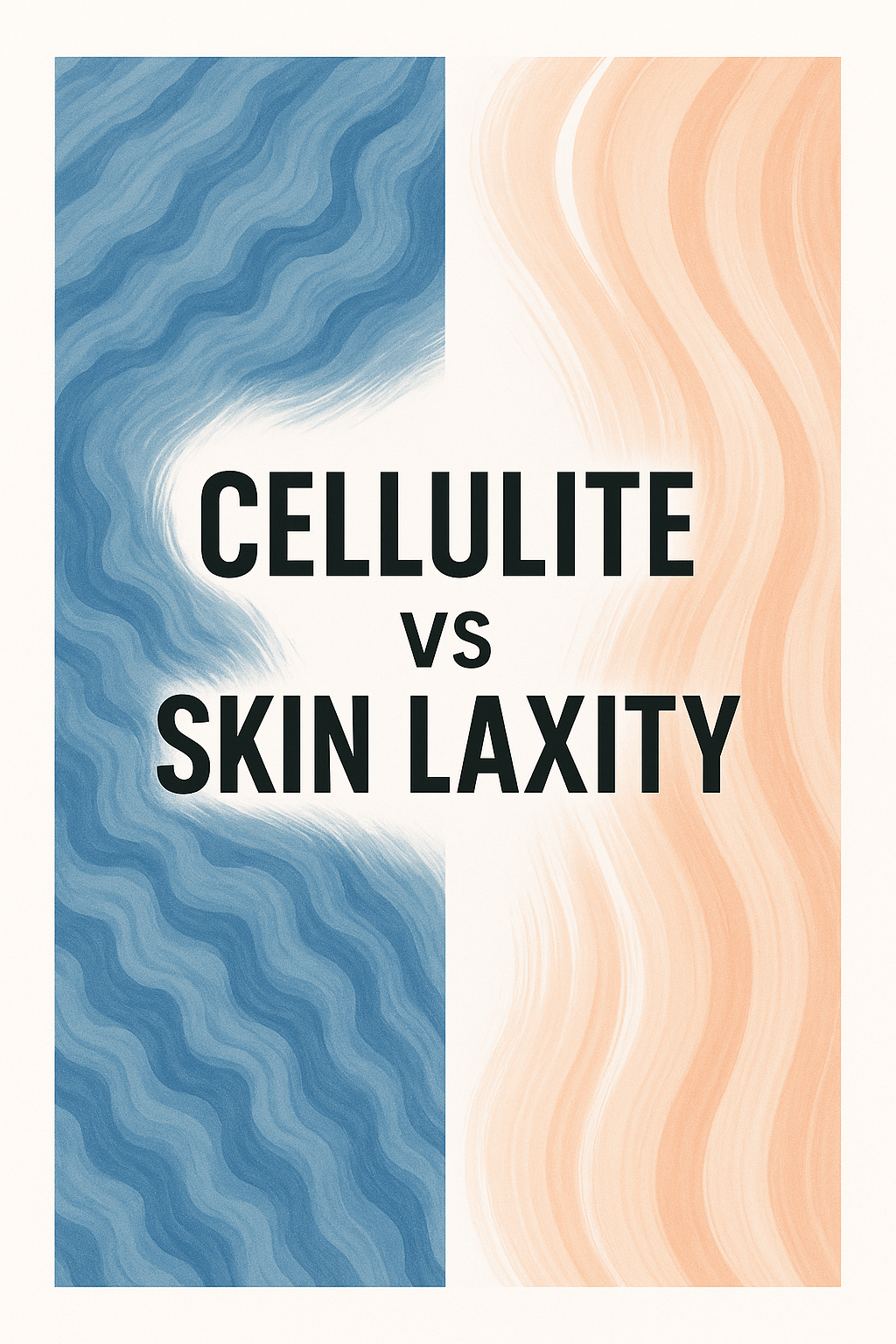Not Cellulite: How Skin Laxity and Nutrient Deficiency Can Masquerade as Cellulite in Postpartum Women

Not Cellulite After All: A 32-Year-Old Mother’s Journey to Reversing Skin Laxity Through Functional Medicine and Red Light Therapy
When a 32-year-old white female walked into my office concerned about what she believed was stubborn cellulite, she was like many women—frustrated, confused, and overwhelmed. She had tried topical creams, dry brushing, and various “cellulite-busting” workouts with no success.
But after a careful evaluation, what we discovered changed everything.
What she thought was cellulite turned out to be skin laxity, a common but often misdiagnosed condition—especially in postpartum women. And the root cause wasn’t her workout routine, age, or genetics. Instead, the true reason behind her skin changes had everything to do with nutritional depletion following four pregnancies in six years.
Cellulite vs. Skin Laxity: What’s the Difference?
Before we dive into her treatment journey, it’s important to clarify a common confusion: cellulite and skin laxity are not the same thing.
- Cellulite occurs when fat deposits push through the connective tissue beneath the skin, often creating a dimpled appearance.
- Skin laxity refers to loose, sagging skin caused by collagen and elastin breakdown, poor hydration, or nutrient deficiency.
In this case, her skin didn’t show the classic dimples or "orange peel" texture of cellulite. Instead, it had a loose, crepey appearance—especially around her thighs and abdomen.
The Hidden Impact of Multiple Pregnancies on Skin Health
During our functional medicine consultation, we zoomed out and looked at the bigger picture.
She had given birth to four children in six years. Between the hormonal shifts, physical changes, and nutrient demands of pregnancy, childbirth, and breastfeeding, her body had gone through significant stress.
Through this lens, the skin laxity made perfect sense.
Pregnancy depletes many of the nutrients critical for skin structure and repair, including:
- Collagen precursors like vitamin C and glycine
- Zinc, required for tissue healing
- Omega-3 fatty acids, needed for skin membrane integrity
- Magnesium and B vitamins, often depleted postpartum
- Iron and protein, essential for oxygen delivery and tissue synthesis
Without replenishing these foundational nutrients, the skin’s elasticity diminishes. And in many women—especially those juggling multiple young children—this damage can go unnoticed until it becomes visibly concerning.
A Functional Medicine Approach to Skin Rejuvenation
After explaining the root cause, I outlined a personalized treatment plan based on functional medicine principles. Instead of masking the problem with creams or procedures, we focused on rebuilding her body from the inside out.
1. Targeted Nutritional Repletion
She was started on a tailored regimen that included:
- High-quality multivitamin with active B-complex
- Collagen peptides with glycine and proline
- Vitamin C (1000–2000 mg/day) to support collagen synthesis
- Zinc (15–30 mg/day) and magnesium glycinate (200–400 mg/day)
- Omega-3 fatty acids from fish oil (2–3 grams/day)
- Iron-rich foods with occasional supplementation as needed
- Amino acid complex to support protein synthesis
We emphasized whole foods, hydration, and timing supplements around her meals for optimal absorption.
2. Red Light Bed Therapy with PEMF
To enhance skin healing at the cellular level, she began undergoing regular red light therapy sessions combined with pulsed electromagnetic field (PEMF) therapy.
- The red light (at wavelengths 630–850 nm) stimulates mitochondrial activity, boosting collagen and elastin production.
- The PEMF therapy helps increase blood flow, reduce inflammation, and improve nutrient delivery to skin cells.
These sessions were done 3 times per week for the first month, then reduced to 1–2 times per week for maintenance.
Results Over Time: Rebuilding from Within
Progress wasn’t immediate—but it was consistent and meaningful.
After just a few weeks of nutritional support and red light bed sessions, she began to notice:
- Tighter skin texture around her abdomen and thighs
- Improved energy, mood, and fewer postpartum symptoms
- Better sleep and less joint pain—unexpected but welcomed improvements likely tied to systemic inflammation reduction
By month three, the visible skin laxity had significantly improved. And more importantly, she understood why it happened, empowering her to prevent it in the future.
Why This Case Matters: Educating Women on Postpartum Skin Health
This case is more than just a success story—it’s a wake-up call for thousands of women who are misled into thinking they have cellulite or that sagging skin is just “part of being a mom.”
Here’s what we can learn:
- Postpartum skin changes are often nutrient-driven
The body prioritizes survival over appearance. When resources are scarce, skin regeneration takes a back seat. Replenishing those resources allows the body to heal naturally. - Red light and PEMF therapy are powerful tools for postpartum recovery
These non-invasive therapies can accelerate healing by stimulating cellular energy and enhancing circulation—without the need for surgery or downtime. - Functional medicine provides a whole-body perspective
Instead of targeting symptoms in isolation, we identify root causes—whether hormonal, nutritional, or environmental—and build sustainable, personalized solutions.
Could Skin Laxity Be Mistaken for Cellulite in You?
If you’re a mom struggling with loose or sagging skin—especially after multiple pregnancies—you’re not alone.
What may look like cellulite could actually be a sign of nutrient depletion, hormonal imbalance, or mitochondrial dysfunction. Fortunately, your body has an incredible ability to repair when given the right support.
Through a combination of targeted supplementation, lifestyle optimization, and cutting-edge regenerative therapies like red light and PEMF, you can restore your skin’s firmness and feel like yourself again.
Final Thoughts
This 32-year-old mother didn’t need cosmetic surgery or another cellulite cream. What she needed was someone to listen, dig deeper, and view her symptoms through a functional medicine lens.
And with the right tools—nutrients, red light, PEMF, and support—her body did exactly what it was designed to do: heal.
Want to learn more about how we treat skin concerns from the inside out?
Schedule a virtual or in-person consultation with Dr. Sheen at Sheen Vein & Aesthetics by calling 314-842-1441.
Your healing starts when we look beneath the surface.